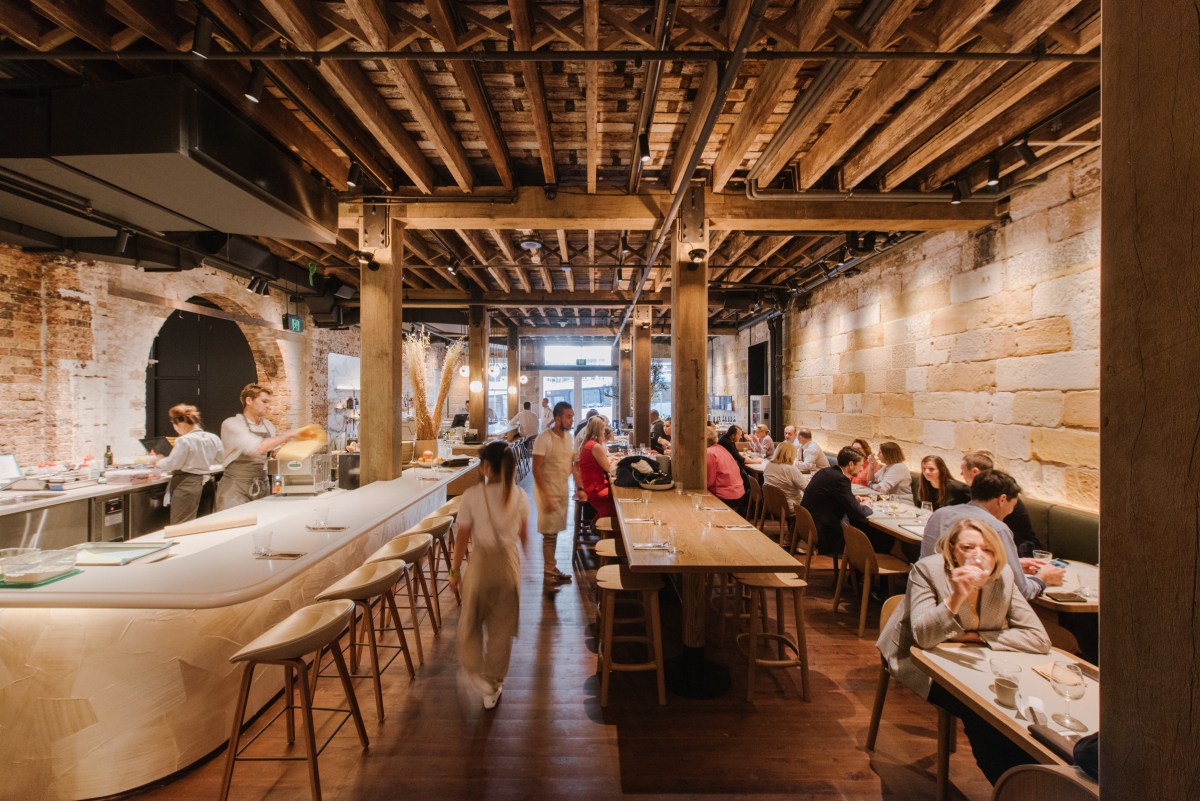In a dream restaurant, you’d have a kitchen filled with every piece of equipment required to get the job done with efficiency in mind. A space with dedicated cool rooms, dry stores and enough room for chefs to work without bumping elbows.
For many, it is just that — a dream; largely thanks to soaring rent costs and the reality that most restaurant kitchens are built without wiggle room.
But there is a ‘solution’ to the age-old qualm — production kitchens. The spaces aren’t pretty (typically), but have become a necessity for restaurants bursting at the seams. Hospitality speaks to Stephen Seckold from House Made Hospitality about why the group decided to install a production kitchen, streamlining culinary operations and the work–life benefits they can provide to staff.
House Made Hospitality made its debut on the Sydney dining scene last year with Hinchcliff House: a four-storey concept in a heritage wool store on Young Street. Iconic buildings naturally come with limitations regarding what operators can and can’t change to ensure character and integrity are preserved.
Thankfully, Hinchcliff House’s stacked design allowed the group to build a dedicated production kitchen on the top level high above basement bar Apollonia, ground-floor all-day diner Grana and first-floor restaurant Lana.
“The way our building was designed meant we couldn’t have a large kitchen on one floor,” says Director Stephen Seckold. “We have two kitchens across our dining rooms, and they could only be a certain size, so we had to put in a production kitchen, which is important for a venue like ours.
“A lot of restaurants trade lunch and dinner, so they can prep in between, but Grana is open all day. It’s also important because there’s a secondary team preparing food continuously, so the other kitchens aren’t disrupted — you don’t want chefs prepping while others are plating.”
The group has recently secured an external prep kitchen in a nearby building as it continues to scale up with a new venue in Bondi. “We’re moving into it just based on volume,” says Seckold. “It’s at the bottom of a high-rise building and is a large kitchen with some cool rooms.”

While the rent is high, the group has plans to offset the cost as much as it can. “We will eventually attach a café to make some revenue to pay the rent,” says Seckold. “But you factor it into the cost of production and venue costs. The kitchen will eventually supply Hinchcliff House and our restaurant at Bondi Pavilion.”
A production kitchen is primarily used by chefs and bar teams for duties spanning everything from juicing citrus for cocktails to making pasta sauces en masse. Basically, it’s always in production mode.
“You can nail everything and execute all your recipes in one location,” says Seckold. “Everything is more consistent. We have large-scale bratt pans and pressure cookers that allow us to make 300 litres of pasta sauce at a time rather than 30. It becomes one job a week, which saves on labour.”
Besides making sauces and braises, the kitchen team uses the space to make mayonnaises, sauces and purées as well as break down proteins and vegetables: “All the things that are time-consuming in the venue,” says Seckold. The team can also keep a keen eye on food waste, with additional produce repurposed for staff meals across Hinchcliff House.
The kitchen is not just the domain of chefs, but Apollonia’s bartenders, who make batched cocktails (including the signature Negroni) in the space. The cocktails are fed through the bar’s tap systems, saving bartenders and customers time when it comes to making and getting a drink.
“We were doing the batched cocktails out of a small area in Apollonia at first, but outgrew the space as the bar became busier,” says Seckold. “The amount of work that goes into the cocktails … it just makes sense to make them in bulk. Bartenders also spend a couple of hours each day juicing citrus to take a step out of the process — it’s better than waiting 25 minutes for a cocktail to be made.”

House Made has appointed a dedicated head chef to run the production kitchen, which is a key role within the group. “The head chef needs to be one of the strongest in the company,” says Seckold. “If you’re breaking down 200 lamb shoulders and
they’re not right, they’re already messed up by the time they come to the kitchen, so getting it right is one of the most integral parts of the business.”
While the kitchen has its own head chef and team, it’s a collaborative space for all chefs to work in (should they choose), with some staff switching between the restaurant and prep kitchen to break up their rosters. “Prep can become repetitive, so we rotate chefs depending on what sort of roster they’re looking for,” says Seckold.
It’s also a good starting point for people entering the industry who may not be ready to break into service just yet. “You can find your feet if you’re not confident in a kitchen environment and can learn all the basics — especially coming out of school,” says Seckold. “You can execute things directly and it’s a nice start compared to just being thrown in the deep end.”
The prep kitchen is certainly appealing for those looking to work ‘normal’ hours and have work–life balance in the culinary industry. “You can work mornings or nights and it’s appealing because you’re not limited to service times,” says Seckold. “It suits someone who wants to get away from the grind of service or who doesn’t want to work nights.”

It might be a productivity hub, but the kitchens are also the place where Hinchcliff’s team develop all the dishes that make it onto the menu — creativity and collaboration is still very much present.
“Our senior team normally do all the development in the kitchen and the juniors are always with them during that stage,” says Seckold. “It’s one of the more exciting parts where you’re talking about dishes and there’s not really a hierarchy where a head chef says, ‘Do this and this’. We talk out all our ideas and collectively come up with new dishes as a team — it’s important for everyone whether you’re junior or senior.”
The sentiment flows down to the day-to-day of hospo life and fosters a sense of camaraderie, which is critical given the pressures that come with working in restaurants. “I find the brigades are more ‘together’ — the industry needs things
to be calmer and more controlled rather than chaotic,” says Seckold. “When service comes around, any chef would say their full focus needs to be on service rather than last-minute prep. The kitchen has order.”
Not to forget one of the most time-sensitive aspects of running restaurants — deliveries. A key perk of having a production kitchen is convenience — operators can have all orders sent to one location. “You spend a lot of time accepting deliveries and it cuts into prep time and cooking when you’re trying to get ready for service,” says Seckold. “Having one kitchen also helps suppliers as they don’t have to do multiple drop-offs and we can just distribute ourselves if we need to.”
As House Made continues to expand, Seckold says additional production kitchens will be needed — something he didn’t think would happen when he first joined the group. “If you told me a year ago that I needed one, I would have said, ‘No, it’s a luxury’. But it really does help bring everything together,” he says. “We will need to get a larger kitchen soon as the business grows; maybe something that’s not in the city, but we will modify as we go. It’s integral as we grow as a group.”

